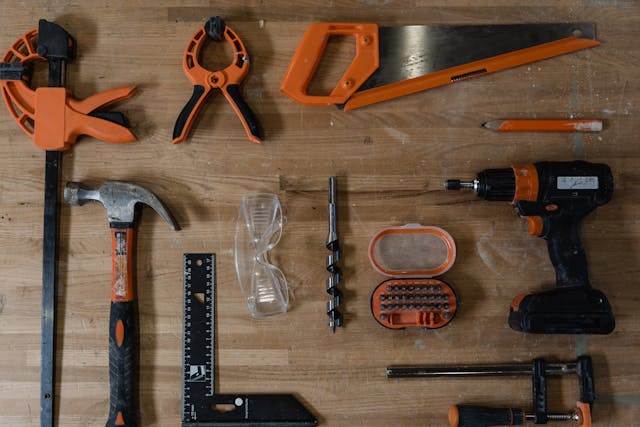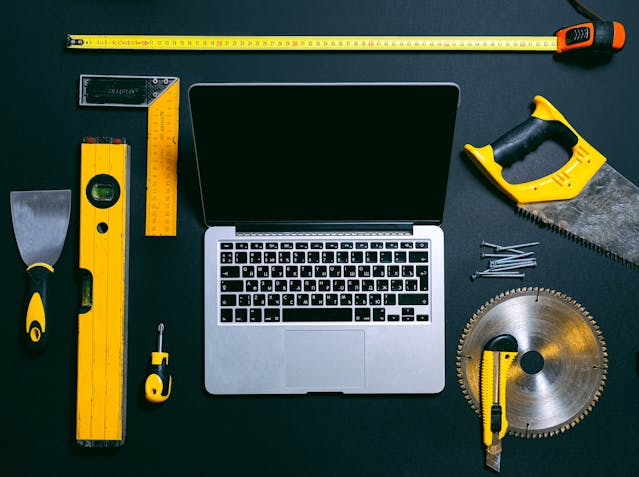Industrial tools have always been at the heart of progress. From the first forged wrench to the precision machines of today, every era of innovation has relied on better, smarter, and more efficient tools. But as technology accelerates, the industrial landscape is changing faster than ever. Automation, robotics, artificial intelligence, and smart manufacturing systems are redefining how industries operate, source supplies, and maintain productivity. The future of industrial tools is not just about strength—it’s about intelligence, adaptability, and data-driven performance.
The Evolution from Manual to Smart Tools
The history of industrial tools reflects the evolution of human ingenuity. Early hand tools represented strength and craftsmanship; powered tools brought speed and consistency. Today, smart tools combine both with intelligence—embedding sensors, connectivity, and analytics into the hardware itself. This transformation has turned once-simple instruments into sources of real-time data and precision control.
Industries no longer view tools merely as mechanical devices but as integrated components of digital ecosystems. From torque wrenches that record pressure metrics to drills that self-calibrate, the line between tool and technology is fading. This evolution enhances accuracy, reduces waste, and supports predictive maintenance across the manufacturing floor.
Robotics and Automation in Tool Operations
The arrival of robotics has revolutionized industrial workflows. Automated arms, precision cutters, and assembly robots are capable of performing repetitive or high-risk tasks with unmatched accuracy. These machines don’t tire, ensuring consistent results in sectors such as automotive manufacturing, aerospace, and heavy equipment production.
However, the most exciting shift is in collaboration—robots working alongside humans. Known as “cobots,” these systems handle tasks requiring precision or lifting strength while human operators manage programming and supervision. This partnership improves safety and efficiency while freeing workers to focus on creativity, quality assurance, and technical oversight.
AI-Driven Precision and Predictive Maintenance
Artificial intelligence is changing the way industries use, maintain, and optimize tools. AI systems now analyze sensor data from tools and machinery to predict wear, prevent breakdowns, and optimize performance. Instead of reacting to failures, companies can schedule maintenance before downtime occurs.
This predictive capability extends to entire supply chains. AI platforms analyze usage trends, order frequencies, and production forecasts to ensure the right tools and materials are always in stock. As a result, businesses save both time and resources while keeping productivity levels at their peak.
The Rise of Smart Manufacturing Ecosystems
Smart manufacturing is about more than automation—it’s about connectivity. The integration of IoT (Internet of Things) into industrial tools has created an ecosystem where every component communicates. Machines talk to tools, tools talk to sensors, and systems talk to suppliers.
This interconnectedness allows for synchronized production lines that self-adjust for optimal efficiency. A sensor-equipped tool can detect inconsistencies in real time and alert the system to recalibrate machinery automatically. In this way, manufacturing becomes not just faster but smarter, minimizing error and maximizing output through constant feedback loops.
Digital Supply Chains and Real-Time Inventory
The digitization of industrial supply chains is streamlining procurement like never before. AI and cloud-based platforms allow companies to track every tool, part, and material from warehouse to workbench. Automated restocking systems ensure that critical items are replenished before shortages occur.
This visibility extends globally, giving manufacturers complete control over their sourcing and logistics. Predictive analytics help suppliers anticipate demand surges and avoid bottlenecks, while digital documentation simplifies compliance and traceability. For industrial operations, these innovations mean fewer disruptions, better cost management, and continuous productivity.
Sustainability and the Green Manufacturing Movement
Sustainability is no longer an afterthought—it’s a core design principle. Modern industrial tools are engineered for efficiency, using recyclable materials and energy-saving technologies. Smart systems monitor energy consumption and suggest adjustments to minimize waste.
Manufacturers are also embracing circular supply models, where tools are refurbished, repurposed, or recycled rather than discarded. By combining sustainability with smart innovation, the industry is paving the way for eco-efficient manufacturing that supports both productivity and the planet’s future.
Augmented Reality (AR) and Virtual Training in Tool Applications
Training and maintenance have entered the digital age through augmented and virtual reality technologies. AR overlays digital information onto physical environments, allowing technicians to see detailed instructions or schematics while working. This hands-free guidance reduces error and accelerates learning for new technicians.
Virtual reality takes this a step further by creating immersive training environments where workers can practice using tools in simulated conditions. This not only reduces training costs but also enhances safety by preparing employees for high-risk environments without real-world exposure.
Customization and 3D Printing in Tool Production
3D printing is reshaping the way industrial tools and components are designed and manufactured. Additive manufacturing enables the creation of customized tools with complex geometries that traditional methods cannot achieve. For specialized industries—like aerospace, automotive, or medical device production—this flexibility is transformative.

Customization allows tools to be lighter, stronger, and more efficient. Combined with AI modeling, 3D printing also supports rapid prototyping, allowing engineers to test and refine designs in real time. As the technology matures, supply chains will become faster, leaner, and more adaptable to specific production needs.
Data Analytics and Performance Optimization
Data has become the most powerful resource in industrial operations. Every connected tool and machine generates valuable insights that, when analyzed, reveal performance patterns, inefficiencies, and opportunities for improvement.
Through centralized analytics platforms, managers can monitor tool usage, worker productivity, and energy consumption. These insights guide better decision-making, helping businesses optimize production schedules, reduce downtime, and enhance quality control. In the modern factory, decisions are driven not by intuition but by actionable data.
Enhanced Safety Through Intelligent Systems
Safety remains paramount in industrial environments, and technology is making workplaces safer than ever. Smart tools equipped with proximity sensors and automatic shut-off functions prevent accidents before they occur. Wearable devices track worker fatigue, exposure levels, and movement, alerting supervisors when safety thresholds are exceeded.
Automation and robotics further minimize human exposure to hazardous tasks, allowing workers to manage systems remotely. With AI-driven safety analytics, companies can identify high-risk zones, forecast potential hazards, and implement corrective actions before incidents happen. The integration of safety intelligence ensures that innovation never compromises well-being.
Cloud-Based Collaboration and Remote Operations
Cloud computing has transformed industrial communication and coordination. Teams can now manage operations from anywhere, accessing data, monitoring equipment, and even controlling tools remotely. This real-time collaboration enables faster decision-making and improved problem-solving across locations.
For global companies, cloud platforms unify data from multiple sites, providing transparency across entire operations. Remote diagnostics and updates keep systems running smoothly, while virtual dashboards give managers complete visibility into performance. The result is a more agile, informed, and connected industrial workforce.
The Human-Machine Partnership
Despite rapid automation, human expertise remains irreplaceable. The most successful industrial systems are those where humans and machines collaborate seamlessly. Workers use technology to enhance precision and productivity, while machines handle repetitive or hazardous tasks.
This partnership demands new skills—data literacy, digital troubleshooting, and cross-disciplinary thinking. As the industry evolves, training programs are shifting focus from manual operation to digital management. The future industrial workforce will be defined by adaptability and collaboration rather than physical strength alone.
Cybersecurity in Industrial Operations
As industries become more connected, cybersecurity becomes as important as physical safety. Smart tools and networked machines create new entry points for cyberattacks that can disrupt operations or compromise sensitive data. Protecting these systems requires layered security strategies including encryption, authentication, and continuous monitoring.
Electrical grids, supply chains, and automated factories all rely on interconnected systems that must remain secure. Cyber-resilience is now an essential component of operational integrity, ensuring that the same networks that enable innovation don’t become vulnerabilities in the process.
Looking Ahead: The Future of Industrial Tools and Supply
The industrial tools sector is moving toward full digital integration—an environment where every wrench, robot, and workstation communicates within an intelligent ecosystem. As AI, robotics, and data analytics advance, tools will become increasingly autonomous and adaptive.
Future innovations may include self-repairing machinery, AI-managed logistics, and tools capable of learning from usage patterns. For industries that depend on precision and uptime, this evolution marks a new era of performance and possibility. The factories of tomorrow will be powered by a synergy of innovation, sustainability, and human creativity.
Conclusion: Building the Smart Industry of the Future
From hand-forged wrenches to intelligent robots, the story of industrial tools is one of constant evolution. What began as mechanical innovation has evolved into digital transformation—an interconnected system of tools, data, and design that continues to redefine industrial potential.
The future of industrial tools and supply solutions lies not only in machines that work harder but in systems that think smarter. Those who embrace this transformation will lead industries that are safer, faster, and more sustainable. The next generation of innovation isn’t about replacing people—it’s about empowering them to build, create, and advance with unprecedented precision.
